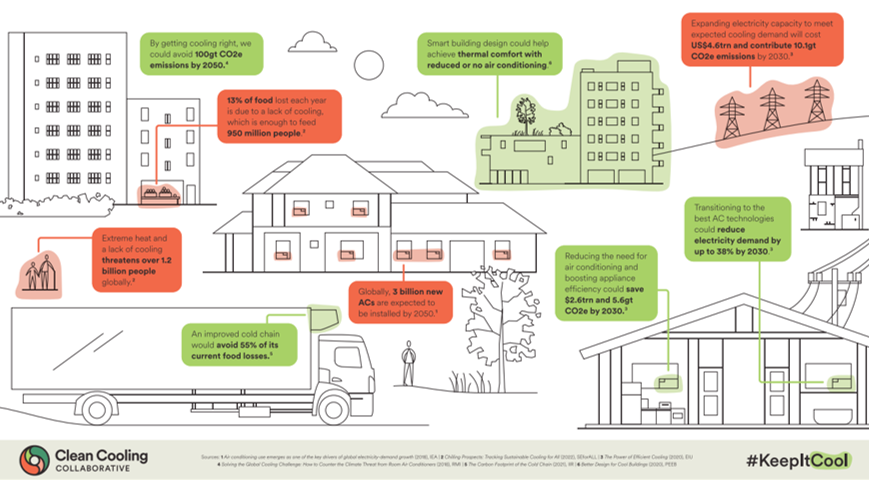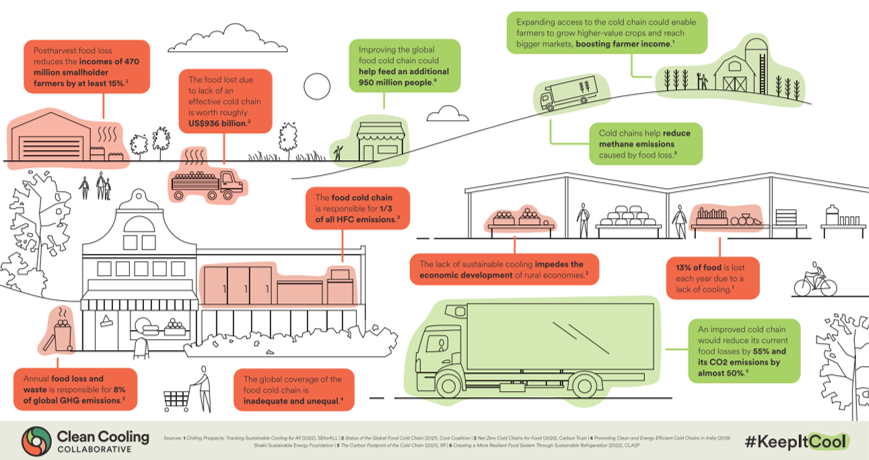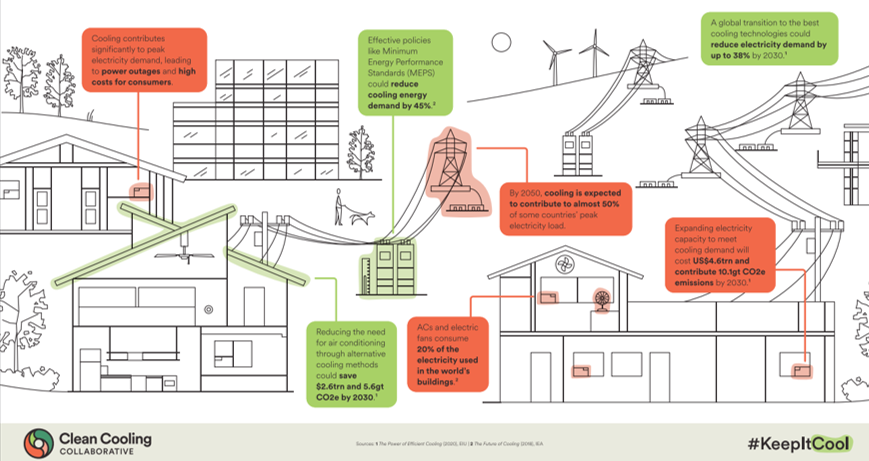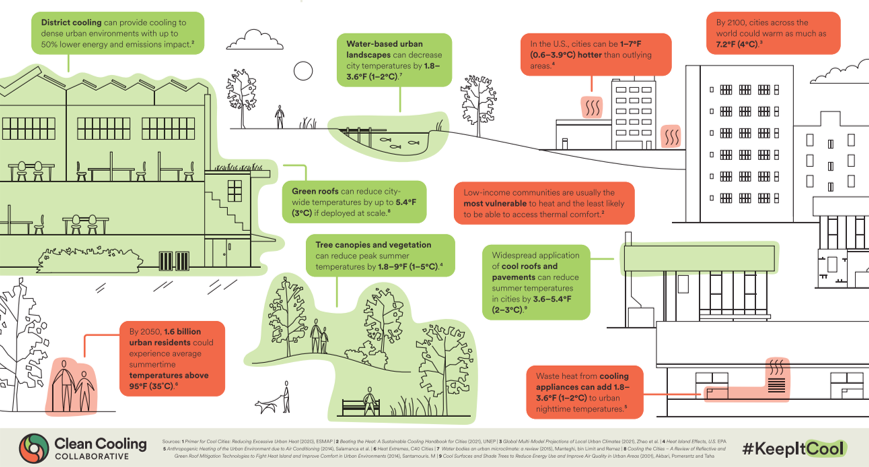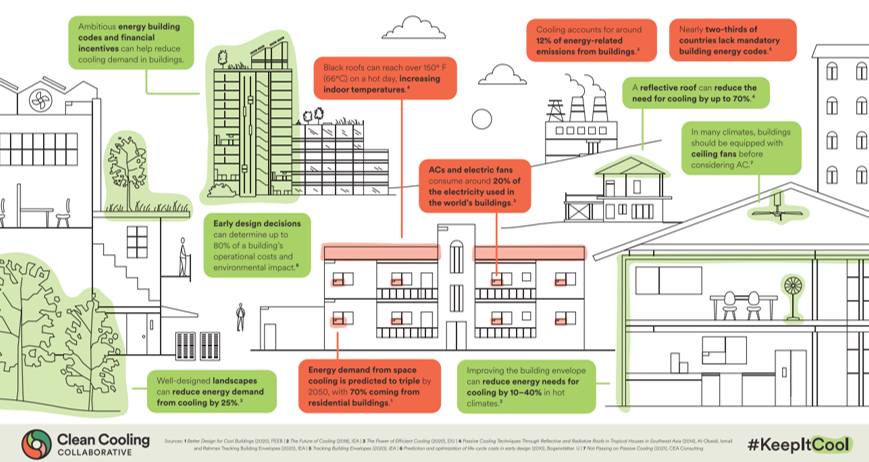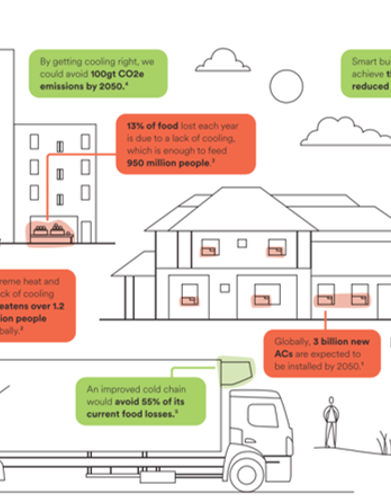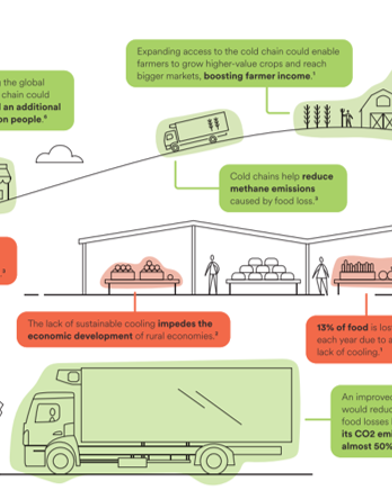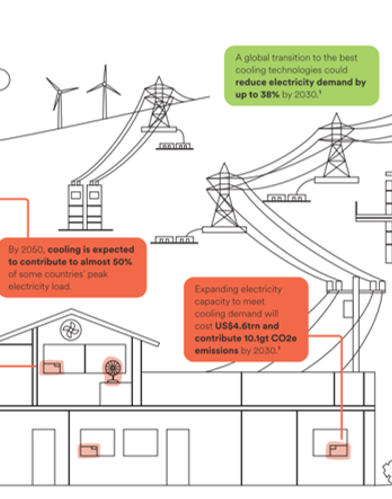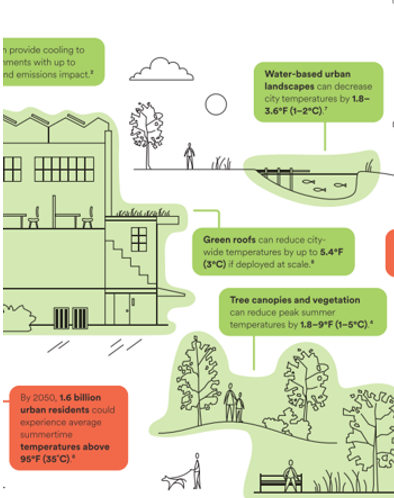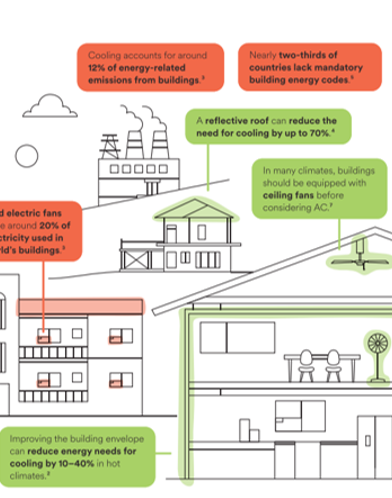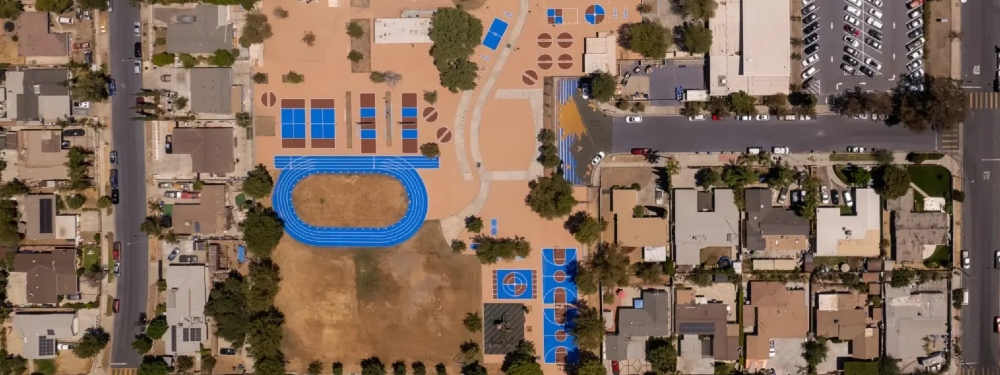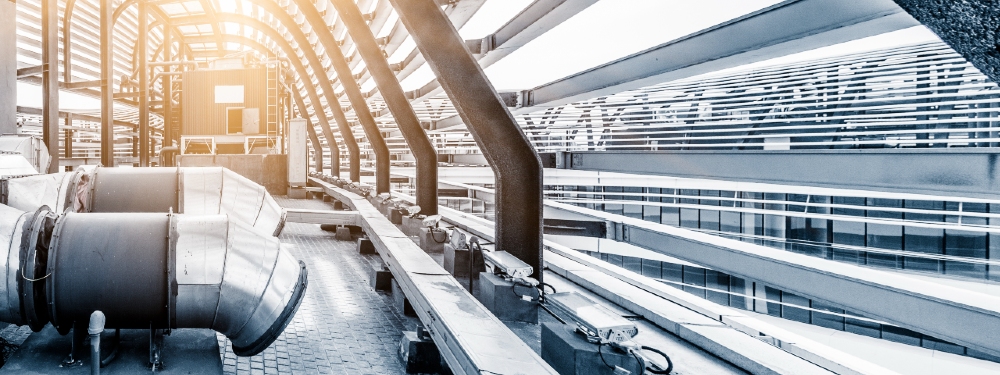#KeepItCool infographics
In a rapidly warming world, cooling is vital for human health, safety, and prosperity. It makes buildings comfortable to live, work, and learn in; it ensures food safety and reduces food waste; it provides necessary storage for medications and vaccines; and it is integral for manufacturing, industry, transportation, and other sectors.
Despite its importance, extreme heat and a lack of access to cooling currently threatens the health and safety of more than 1.2 billion people around the world.
Clean cooling for all
As temperatures rise, cooling demand is expected to triple by 2050. Cooling already produces more than 7% of global greenhouse gas emissions and if we don’t transform how we cool, these emissions could double over the same period.
Download infographic here.
The sustainable food cold chain
Agricultural cold chains are an important part of sustainable development but they can have a significant impact on our climate. A sustainable cold chain can help reduce food loss and its associated greenhouse gas emissions while improving income for farmers and nutrition for consumers.
Download infographic here.
Cooling and the clean energy transition
Cooling brings a host of benefits to society but it can also place a major strain on the power grid. Without addressing the efficiency of cooling technologies, energy demand for cooling will more than triple by 2050, threatening our transition to a clean power grid.
Download infographic here.
Cool cities
The world’s cities are heating up at twice the global average rate due to the urban heat island (UHI) effect – a phenomenon where urban areas get hotter due to factors like less green space, more heat-absorbing materials like concrete and steel, and waste heat from human activities.
Download infographic here.
Cool and comfortable buildings
Smart building design can help achieve thermal comfort with reduced or no need for mechanical cooling like ACs. If buildings were designed to make inhabitants comfortable naturally, then we could reduce the need for mechanical cooling by 50–80%.
Download infographic here.
